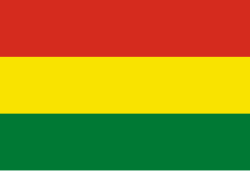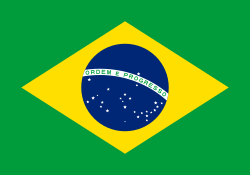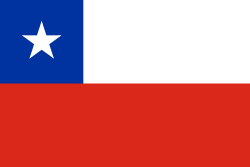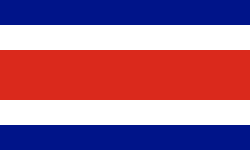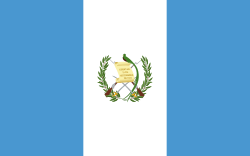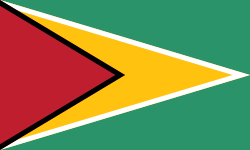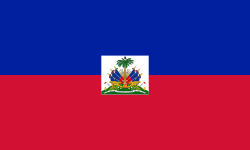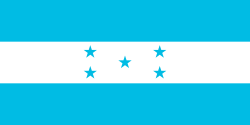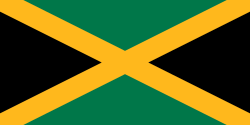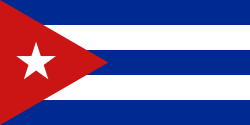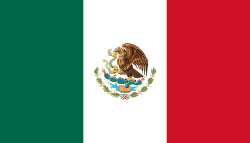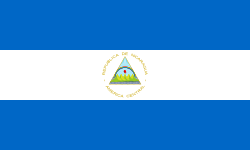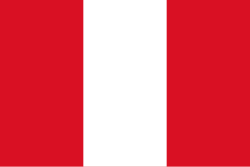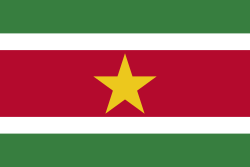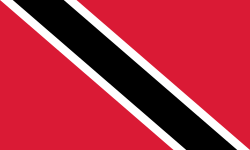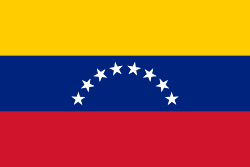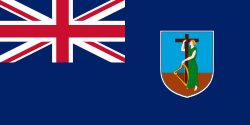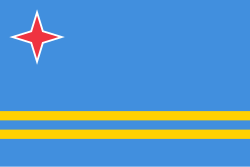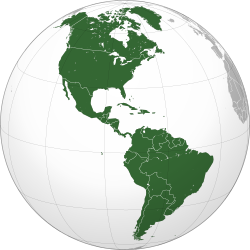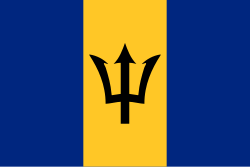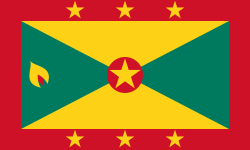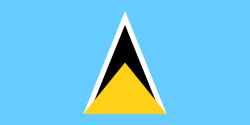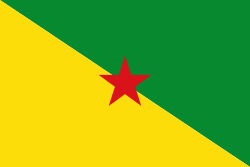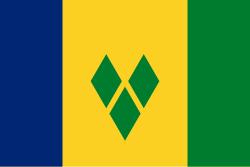Senat (Chile)
| Senado de Chile Senat von Chile | |
|---|---|
 | |
| Basisdaten | |
| Sitz: | Valparaíso |
| Legislaturperiode: | 8 Jahre |
| Abgeordnete: | 50 |
| Aktuelle Legislaturperiode | |
| Letzte Wahl: | 2021 |
| Vorsitz: | Álvaro Elizalde |
 | |
| Sitzverteilung: | Regierung (19) Chile Vamos: |
| Website | |
| Website des chilenischen Senats | |
| Der Nationalkongress Chiles | |
 | |
Der Senat Chiles (spanisch: Senado de la República de Chile) ist das Oberhaus des chilenischen Nationalkongresses. Gemeinsam mit der Abgeordnetenkammer bildet er die legislative Gewalt in Chile. Sitz des Senats ist das Gebäude des Nationalkongresses in der chilenischen Hafenstadt Valparaíso.
Geschichte
Der erste Senat wurde 1812 als Teil des ersten chilenischen Nationalkongresses von der damaligen Regierungs-Junta gebildet. Er hatte seinen Sitz in Santiago de Chile und bestand aus insgesamt zehn Mitgliedern. In den folgenden Jahrzehnten unterlag der Senat vielen Änderungen aufgrund der Instabilität des Landes und den sich ständig ändernden Verfassungen. Erst die Verfassung von 1833 hatte über einen längeren Zeitraum Bestand. Unter dieser Verfassung setzte sich der Senat aus 20 Mitgliedern zusammen, die für eine neunjährige Amtszeit gewählt wurden. Dies änderte sich jedoch unter der Verfassung von 1925. Unter der Verfassung von 1980, die während der Militärdiktatur unter Augusto Pinochet entstand, änderte sich die Zusammensetzung des Senats erneut. In dieser Verfassung war vorgesehen, dass 26 der Senatoren vom Volk direkt gewählt würden (2 pro Region). Daneben gab es neun Senatoren, die von verschiedenen Organen ernannt wurden, nämlich
- vier ehemalige Oberbefehlshaber, die von den Streitkräften ernannt wurden
- drei vom Obersten Gerichtshof ernannten Mitglieder, nämlich zwei ehemalige oberste Richter und einen ehemaligen Leiter des Rechnungshofes
- zwei vom Präsidenten ernannten Mitglieder, nämlich einen ehemaligen Minister und einen ehemaligen Universitätsrektor
All diese Senatoren hatten eine achtjährige Amtszeit. Daneben wurde jeder ehemalige Präsident, der länger als sechs Jahre im Amt war, automatisch zum Senator auf Lebenszeit ernannt.[1] Auch nach Ende der Militärdiktatur blieb diese Zusammensetzung so erstmal bestehen. Dies hatte zur Folge, dass der ehemalige Diktator Pinochet nach seinem Ausscheiden als Staatspräsident noch Teil des Senats als Senator auf Lebenszeit wurde.[2] Dies blieb er bis zu seinem Rücktritt 2002. Der einzige weitere Senator auf Lebenszeit war Eduardo Frei Ruiz-Tagle zwischen 2000 und 2006. Mit der Verfassungsreform von 2005 wurden jedoch die ernannten Senatoren sowie die Senatoren auf Lebenszeit abgeschafft.[3][4] Die Gesamtzahl der Senatoren wurde auf 38 festgelegt. Nach der Verfassungsreform von 2015 wurde die Anzahl der Senatoren jedoch stetig auf 50 erweitert.[5]
Wahl und Zusammensetzung
Seit der Parlamentswahl in Chile 2021 besteht der Senat aus 50 Mitglieder. Die Senatoren werden in den Regionen Chiles gewählt, jede Region wird, je nach Einwohnerzahl, von zwei bis fünf Senatoren vertreten. Insgesamt werden die Senatoren für eine Amtszeit von acht Jahren gewählt, alle vier Jahre wird etwa die Hälfte des Senates neu gewählt.[6] So ergeben sich zwei Wahlklassen:
| Wahlklasse | Beginn | Ende | Apruebo Dignidad | Socialismo Democrático | Chile Vamos | Andere Koalitionen | Gesamt |
|---|---|---|---|---|---|---|---|
| 1 | 2018 | 2026 | 1 | 7 | 12 | 3 | 23 |
| 2 | 2022 | 2030 | 5 | 6 | 12 | 4 | 27 |
| Gesamt | 6 | 13 | 24 | 7 | 50 | ||
Dem Senat steht der Senatspräsident vor, der von den Senatoren gewählt wird. Er leitet die Sitzungen und repräsentiert den Senat nach außen. Seit März 2022 hat dieses Amt der Senator Álvaro Elizalde von der Partido Socialista inne. Daneben gibt es einen Vizepräsident, dies ist aktuell Luz Ebensperger von der UDI.[7]
Aktuelle Senatoren
Aktuell sieht die Verteilung der Sitze nach Parteien im chilenischen Senat wie folgt aus:
Die Regierungskoalition Chile Vamos stellt mit 19 Mitgliedern jedoch keine Mehrheit der Sitze. Die andere große Koalition, die Unidad Constituyente, kommt auf insgesamt 21 Sitze. Daneben sind drei unabhängige Senatoren oder Mitglieder anderer Koalitionen vertreten. Aktuell sind folgende Senatoren vertreten:[8]
| Wahlkreis | Region Chiles | Wahlklasse | Senator | Name | Koalition | Partei | Senator seit | Ende der Amtszeit |
|---|---|---|---|---|---|---|---|---|
| 1 | Arica y Parinacota | 1 |  | José Miguel Insulza | Socialismo Democrático | PS | 2018 | 2026 |
| 1 | Arica y Parinacota | 1 |  | José Durana | Chile Vamos | UDI | 2018 | 2026 |
| 2 | Tarapacá | 1 |  | Jorge Soria | Socialismo Democrático | Unabhängig, gewählt für die PPD | 2018 | 2026 |
| 2 | Tarapacá | 1 |  | Luz Ebensperger | Chile Vamos | UDI | 2018 | 2022 |
| 3 | Antofagasta | 2 |  | Pedro Araya | Socialismo Democrático | Unabhängig, gewählt für die PPD | 2014 | 2030 |
| 3 | Antofagasta | 2 |  | Esteban Velásquez | Apruebo Dignidad | FRVES | 2022 | 2030 |
| 3 | Antofagasta | 2 |  | Paulina Núñez | Chile Vamos | RN | 2022 | 2030 |
| 4 | Atacama | 1 |  | Yasna Provoste | keine Koalition | PDC | 2018 | 2026 |
| 4 | Atacama | 1 |  | Rafael Prohens | Chile Vamos | RN | 2018 | 2026 |
| 5 | Coquimbo | 2 |  | Daniel Núñez | Apruebo Dignidad | PCCh | 2022 | 2030 |
| 5 | Coquimbo | 2 |  | Matías Walker | keine Koalition | Demócratas | 2022 | 2030 |
| 5 | Coquimbo | 2 |  | Sergio Gahona | Chile Vamos | UDI | 2022 | 2030 |
| 6 | Valparaíso | 1 |  | Francisco Chahuán | Chile Vamos | RN | 2010 | 2026 |
| 6 | Valparaíso | 1 |  | Kenneth Pugh | Chile Vamos | RN | 2018 | 2026 |
| 6 | Valparaíso | 1 |  | Ricardo Lagos Weber | Socialismo Democrático | PPD | 2010 | 2026 |
| 6 | Valparaíso | 1 |  | Isabel Allende | Socialismo Democrático | PS | 2018 | 2026 |
| 6 | Valparaíso | 1 |  | Juan Ignacio Latorre | Apruebo Dignidad | RD | 2018 | 2026 |
| 7 | RM | 2 |  | Manuel José Ossandón | Chile Vamos | RN | 2014 | 2030 |
| 7 | RM | 2 |  | Luciano Cruz-Coke | Chile Vamos | EVOP | 2022 | 2030 |
| 7 | RM | 2 |  | Claudia Pascual | Apruebo Dignidad | PCCh | 2022 | 2030 |
| 7 | RM | 2 |  | Fabiola Campillai | Apruebo Dignidad | Unabhängig | 2022 | 2030 |
| 7 | RM | 2 |  | Rojo Edwards | keine Koalition | PLR | 2022 | 2030 |
| 8 | O’Higgins | 2 |  | Alejandra Sepúlveda | Apruebo Dignidad | FRVES | 2022 | 2030 |
| 8 | O’Higgins | 2 |  | Javier Macaya | Chile Vamos | UDI | 2022 | 2030 |
| 8 | O’Higgins | 2 | Juan Luis Castro | Socialismo Democrático | PS | 2022 | 2030 | |
| 9 | Maule | 1 |  | Juan Castro Prieto | Chile Vamos | Unabhängig, gewählt für die RN | 2018 | 2026 |
| 9 | Maule | 1 |  | Rodrigo Galilea | Chile Vamos | RN | 2018 | 2026 |
| 9 | Maule | 1 |  | Juan Antonio Coloma | Chile Vamos | UDI | 2002 | 2026 |
| 9 | Maule | 1 |  | Ximena Rincón | keine Koalition | Demócratas | 2018 | 2026 |
| 9 | Maule | 1 |  | Álvaro Elizalde | Socialismo Democrático | PS | 2018 | 2026 |
| 16 | Ñuble | 2 |  | Loreto Carvajal | Socialismo Democrático | PPD | 2021 | 2030 |
| 16 | Ñuble | 2 |  | Gustavo Sanhueza | Chile Vamos | UDI | 2022 | 2030 |
| 10 | Biobío | 2 |  | Sebastián Keitel | Chile Vamos | EVOP | 2022 | 2030 |
| 10 | Biobío | 2 |  | Enrique van Rysselberghe Herrera | Chile Vamos | UDI | 2022 | 2030 |
| 10 | Biobío | 2 |  | Gastón Saavedra | Socialismo Democrático | PS | 2022 | 2030 |
| 11 | Araucanía | 1 |  | Felipe Kast | Chile Vamos | EVOP | 2018 | 2026 |
| 11 | Araucanía | 1 |  | Carmen Gloria Aravena | Chile Vamos | Unabhängig | 2018 | 2026 |
| 11 | Araucanía | 1 |  | José García Ruminot | Chile Vamos | RN | 2002 | 2026 |
| 11 | Araucanía | 1 |  | Francisco Huenchumilla | keine Koalition | PDC | 2018 | 2026 |
| 11 | Araucanía | 1 |  | Jaime Quintana | Socialismo Democrático | PPD | 2010 | 2026 |
| 12 | Los Ríos | 2 |  | Alfonso De Urresti | Socialismo Democrático | PS | 2014 | 2030 |
| 12 | Los Ríos | 2 |  | María José Gatica | Chile Vamos | RN | 2022 | 2030 |
| 12 | Los Ríos | 2 | Iván Flores | keine Koalition | PDC | 2022 | 2030 | |
| 13 | Los Lagos | 2 |  | Iván Moreira | Chile Vamos | UDI | 2014 | 2030 |
| 13 | Los Lagos | 2 | Fidel Espinoza | Socialismo Democrático | PS | 2022 | 2030 | |
| 13 | Los Lagos | 2 |  | Carlos Kuschel | Chile Vamos | RN | 2022 | 2030 |
| 14 | Aysén | 1 |  | David Sandoval | Chile Vamos | UDI | 2018 | 2026 |
| 14 | Aysén | 1 |  | Ximena Órdenes | Socialismo Democrático | Unabhängig, gewählt für die PPD | 2018 | 2026 |
| 15 | Magallanes | 2 | Karim Bianchi | Unabhängig | Unabhängig | 2022 | 2030 | |
| 15 | Magallanes | 2 |  | Alejandro Kusanovic | Chile Vamos | Unabhängig, gewählt für die RN | 2022 | 2030 |
Weblinks
Einzelnachweise
- ↑ Cámara Baja Aprobó Fin de Designados. Abgerufen am 4. August 2021.
- ↑ Jose de CordobaStaff Reporter of The Wall Street Journal: Pinochet Sworn In as Senator for Life As His Legacy Still Dominates Chile. In: Wall Street Journal. 11. März 1998, ISSN 0099-9660 (wsj.com [abgerufen am 4. August 2021]).
- ↑ International - Senates of the world - Chili - Sénat. Archiviert vom (nicht mehr online verfügbar) am 4. August 2021; abgerufen am 4. August 2021. Info: Der Archivlink wurde automatisch eingesetzt und noch nicht geprüft. Bitte prüfe Original- und Archivlink gemäß Anleitung und entferne dann diesen Hinweis.
- ↑ CHILE: Historic Reforms Complete Transition to Democracy. 14. Juli 2005, abgerufen am 4. August 2021.
- ↑ BCN Biblioteca del Congreso Nacional de Chile: Historia Política. 1. Oktober 2020, abgerufen am 4. August 2021.
- ↑ Biblioteca del Congreso Nacional de Chile: Ley Fácil. 27. November 2014, abgerufen am 4. August 2021 (spanisch).
- ↑ Presidentes y Vicepresidentes del Senado. Abgerufen am 9. Dezember 2021.
- ↑ Senadores. Abgerufen am 4. August 2021.
Auf dieser Seite verwendete Medien
| Flagge von Bolivia* | |
|---|---|
| country | Template:I18n/Republic of Bolivia |
| genutzt von | Bolivia |
| von | 1851 |
| bis | Present |
| entworfen von | Government of Bolivia |
| Format | 15:22 |
| Form | Rechteck |
| Farben | Rot, Gelb, Grün
Flagge hat 3 horizontale Streifen |
| sonstige Eigenschaften | A horizontal tricolor of red, yellow and green. |
Das Bild dieser Flagge lässt sich leicht mit einem Rahmen versehen
Die Flagge der Dominikanischen Republik hat ein zentriertes weißes Kreuz, das bis zu den Rändern reicht. Dieses Emblem ähnelt dem Flaggendesign und zeigt eine Bibel, ein Kreuz aus Gold und sechs dominikanische Flaggen. Um den Schild herum sind Oliven- und Palmzweige und oben am Band steht das Motto "Dios, Patria, Libertad" ("Gott, Land, Freiheit") und zur liebenswürdigen Freiheit. Das Blau soll für Freiheit stehen, Rot für das Feuer und Blut des Unabhängigkeitskampfes und das weiße Kreuz symbolisierte, dass Gott sein Volk nicht vergessen hat. "Dominikanische Republik". Die dominikanische Flagge wurde von Juan Pablo Duarte, dem Vater der nationalen Unabhängigkeit der Dominikanischen Republik, entworfen. Die erste dominikanische Flagge wurde von einer jungen Dame namens Concepción Bona genäht, die in der Nacht des 27. Februar 1844 gegenüber der Straße von El Baluarte, dem Denkmal, an dem sich die Patrioten versammelten, um für die Unabhängigkeit zu kämpfen, wohnte. Concepción Bona wurde von ihrer Cousine ersten Grades unterstützt Maria de Jesús Pina.
Die National- und offizielle Staatsflagge von Haiti. Die Zivilflagge findet sich hier.
Flag of Canada introduced in 1965, using Pantone colors. This design replaced the Canadian Red Ensign design.
Flagge Trinidad und Tobago
Autor/Urheber: Comando Michelle Bachelet, Lizenz: CC BY-SA 3.0
Ministro de Estado del segundo gobierno de Michelle Bachelet (2014-2018)
Flag of Martinique adopted on February 2, 2023
(c) Biblioteca del Congreso Nacional de Chile, CC BY-SA 3.0 cl
Sebastián Keitel Bianchi en la fotografía oficial de diputados periodo 2018-2022. (Fotos: Christel Andler, René Lescornez, Johanna Zárate)
(c) Biblioteca del Congreso Nacional de Chile, CC BY-SA 3.0 cl
Fotografía oficial de diputados periodo 2018-2022.Fotos: Christel Andler, René Lescornez, Johanna Zárate
(c) Gobierno de Chile, CC BY 3.0 cl
Intendenta de la Región de Tarapacá, Luz Ebensperger Orrego.
(c) Biblioteca del Congreso Nacional, CC BY 3.0 cl
, ex ministro y senador chileno.
(c) Biblioteca del Congreso Nacional, CC BY 3.0 cl
Juan Antonio Coloma Correa
(c) Biblioteca del Congreso Nacional de Chile, CC BY-SA 3.0 cl
Sergio Gahona Salazar en la fotografía oficial de diputados periodo 2018-2022. (Fotos: Christel Andler, René Lescornez, Johanna Zárate)
Flag of the Turks and Caicos Islands
Autor/Urheber: Heraldry, Lizenz: CC BY-SA 3.0
Flag of the Central American Integration System
(c) Biblioteca del Congreso Nacional de Chile, CC BY-SA 3.0 cl
Luciano Cruz Coke Carvallo en la fotografía oficial de diputados periodo 2018-2022. (Fotos: Christel Andler, René Lescornez, Johanna Zárate)
(c) Biblioteca del Congreso Nacional de Chile, CC BY-SA 3.0 cl
Carmen Gloria Aravena Acuña, ingeniera agrónoma y política chilena
Autor/Urheber: Comando Michelle Bachelet, Lizenz: CC BY-SA 3.0
Ministro de Estado del segundo gobierno de Michelle Bachelet (2014-2018)
Autor/Urheber: James2813, Lizenz: CC BY-SA 4.0
Es wird erwartet, dass dieses Bild stets auf dem neuesten Stand ist. Aktualisiere es ruhig, falls nötig.
The flag of Aruba
(c) Biblioteca del Congreso Nacional de Chile, CC BY-SA 3.0 cl
Iván Flores García en la fotografía oficial de diputados periodo 2018-2022. (Fotos: Christel Andler, René Lescornez, Johanna Zárate)
(c) Biblioteca del Congreso Nacional de Chile, CC BY-SA 3.0 cl
José Miguel Insulza Salinas, abogado y político chileno
Autor/Urheber: Gatica Bertin, Lizenz: CC BY-SA 4.0
Maria José Gatica Bertín, Candidata a Senadora
(c) Biblioteca del Congreso Nacional de Chile, CC BY-SA 3.0 cl
Fotografía oficial de diputados periodo 2018-2022.Fotos: Christel Andler, René Lescornez, Johanna Zárate
(c) Biblioteca del Congreso Nacional, CC BY 3.0 cl
Yasna Provoste Campillay, política chilena.
(c) Biblioteca del Congreso Nacional de Chile, CC BY-SA 3.0 cl
Fotografía oficial de Paulina Andrea Núñez Urrutia
Autor/Urheber: Martin23230, Lizenz: CC BY-SA 3.0
Orthographic map of the Americas with national borders added
Autor/Urheber: Comando Michelle Bachelet, Lizenz: CC BY-SA 3.0
Ministro de Estado del segundo gobierno de Michelle Bachelet (2014-2018)
Autor/Urheber: See File history below for details., Lizenz: CC0
Die Flagge Dominicas.
Autor/Urheber: Cristian Soto Suazo, Lizenz: CC BY-SA 4.0
Juan Castro Prieto
(c) Biblioteca del Congreso Nacional, CC BY 3.0 cl
Manuel José Ossandón Irarrázabal
(c) Biblioteca del Congreso Nacional, CC BY 3.0 cl
Francisco Chahuán Chahuán
(c) Biblioteca del Congreso Nacional, CC BY 3.0 cl
Isabel Allende Bussi, senadora chilena.
Flag of Anguilla, adopted on 30 May 1990 and modified slightly on 25 January 1999.
(c) 3.0 Chile (CC BY 3.0)
José García Ruminot mirando de frente, en su pagina principal.
Flag of the Andean Community of Nations
Autor/Urheber: Solivan23, Lizenz: CC BY-SA 4.0
Diputado por la Región de Antofagasta
(c) Biblioteca del Congreso Nacional de Chile, CC BY-SA 3.0 cl
Fidel Espinoza Sandoval en la fotografía oficial de diputados periodo 2018-2022. (Fotos: Christel Andler, René Lescornez, Johanna Zárate)
(c) Biblioteca del Congreso Nacional de Chile, CC BY-SA 3.0 cl
Rafael Prohens Espinosa, agricultor y político chileno
(c) Biblioteca del Congreso Nacional de Chile, CC BY-SA 3.0 cl
Loreto Carvajal Ambiado en la fotografía oficial de diputados periodo 2018-2022. (Fotos: Christel Andler, René Lescornez, Johanna Zárate)
Autor/Urheber: Sfs90, Lizenz: CC BY-SA 3.0
Emblema del Senado de la República de Chile.
(c) Biblioteca del Congreso Nacional de Chile, CC BY-SA 3.0 cl
Kenneth Peter Pugh Olavarría, ingeniero naval y político chileno
(c) Biblioteca del Congreso Nacional de Chile, CC BY-SA 3.0 cl
Carlos Ignacio Kuschel Silva en la fotografía oficial de diputados periodo 2018-2022. (Fotos: Christel Andler, René Lescornez, Johanna Zárate)
(c) Biblioteca del Congreso Nacional de Chile, CC BY-SA 3.0 cl
Gastón René Saavedra Chandía en la fotografía oficial de diputados periodo 2018-2022. (Fotos: Christel Andler, René Lescornez, Johanna Zárate)
(c) Biblioteca del Congreso Nacional de Chile, CC BY-SA 3.0 cl
José Miguel Alberto Durana Semir, contador y político chileno
(c) Biblioteca del Congreso Nacional de Chile, CC BY-SA 3.0 cl
Ximena Loreto Órdenes Neira, socióloga y política chilena
(c) Biblioteca del Congreso Nacional de Chile, CC BY-SA 3.0 cl
Juan Ignacio Latorre Riveros, psicólogo y político chileno
Autor/Urheber: Biblioteca del Congreso Nacional de Chile, Lizenz: CC BY 3.0
Fotografía oficial de Enrique van Rysselberghe Herrera como diputado de la República de Chile, periodo 2018-2022
The flag of Curaçao is a blue field with a horizontal yellow stripe slightly below the midline and two white, five-pointed stars in the canton. The geometry and colors are according to the description at Flags of the World.
Autor/Urheber: Senado de Chile, Lizenz: CC0
Senadora por la Región Metropolitana, Fabiola Campillai Rojas
(c) Biblioteca del Congreso Nacional de Chile, CC BY-SA 3.0 cl
Felipe José Kast Sommerhoff
(c) Biblioteca del Congreso Nacional de Chile, CC BY-SA 3.0 cl
Alejandra Sepúlveda Orbenes en la fotografía oficial de diputados periodo 2018-2022. (Fotos: Christel Andler, René Lescornez, Johanna Zárate)
(c) Biblioteca del Congreso Nacional de Chile, CC BY-SA 3.0 cl
Matías Walker Prieto en la fotografía oficial de diputados periodo 2018-2022. (Fotos: Christel Andler, René Lescornez, Johanna Zárate)
(c) Biblioteca del Congreso Nacional, CC BY 3.0 cl
Diputado de la República de Chile, militante del Partido Socialista de Chile.
(c) Gobierno de Chile, CC BY 3.0 cl
Intendent (regional governor) during the second government of Michelle Bachelet (2014-18).
(c) Biblioteca del Congreso Nacional, CC BY 3.0 cl
José Manuel Rojo Edwards Silva
Flag of French Guiana. Adopted as official flag by the General Council on January 29, 2010.
(c) Biblioteca del Congreso Nacional de Chile, CC BY-SA 3.0 cl
Jorge Alejandro Soria Quiroga, operador naviero y político chileno
(c) Biblioteca del Congreso Nacional de Chile, CC BY-SA 3.0 cl
Fotografía oficial de diputado Daniel Ignacio Núñez Arancibia
Autor/Urheber: Biblioteca del Congreso Nacional de Chile, Lizenz: CC BY 3.0
Official photograph of Gustavo Sanhueza as deputy of the Republic in 2018
Autor/Urheber: J Tower, Lizenz: CC BY-SA 4.0
Rodrigo Galilea, Ex Intendente de la Región del Maule
Autor/Urheber: B1mbo, Lizenz: CC BY-SA 4.0
Distribución del Senado de Chile tras las elecciones de 2021 (por partido).








